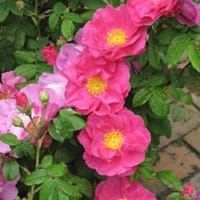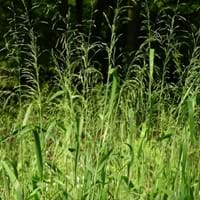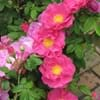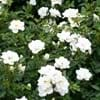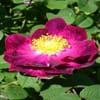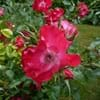Life Span
Perennial
Perennial
Origin
Central Europe, Southern Europe
United States, Northeastern United States, Mid-Atlantic United States, Southeastern United States, North-Central United States, Central United States, South-Central United States, Canada
Types
Not Available
Not Available
Habitat
Temperate Regions
Damp shady woods
USDA Hardiness Zone
5-9
5-9
Sunset Zone
H1, H2, 6, 7, 8, 9, 12, 13, 14, 15, 16, 17, 18, 19, 20, 21, 22, 23, 24
3b, 4, 5, 6, 7, 8, 9, 14, 15, 16, 17
Habit
Upright/Erect
Clump-Forming
Flower Color
Dark Purple, Pink, Purple
Not Available
Flower Color Modifier
Not Available
Bicolor
Fruit Color
Dark Blue, orange brown
Not Available
Leaf Color in Spring
Dark Green
Green, Light Green
Leaf Color in Summer
Dark Green
Light Green
Leaf Color in Fall
Dark Green, Yellow green, Orange Red
Green, Light Green, Yellow green
Leaf Color in Winter
Light Green
Not Available
Leaf Shape
Pinnate
Long Linear
Plant Season
Spring, Summer, Fall
Summer, Fall
Sunlight
Full Sun, Partial Sun
Partial Sun, Partial shade
Type of Soil
Loam, Sand
Clay, Loam
The pH of Soil
Acidic, Neutral
Acidic, Neutral
Soil Drainage
Well drained
Average
Bloom Time
Spring, Late Spring, Early Summer, Summer, Late Summer, Early Fall, Fall
Summer, Late Summer
Repeat Bloomer
Not Available
No
Tolerances
Drought
Wet Site
Where to Plant?
Container, Ground, Pot
Container, Ground, Pot
How to Plant?
Cuttings
Divison, Seedlings
Plant Maintenance
Medium
Medium
Watering Requirements
Average Water Needs
Requires a lot of watering
In Summer
Lots of watering
Lots of watering
In Spring
Moderate
Moderate
In Winter
Average Water
Average Water
Soil pH
Acidic, Neutral
Acidic, Neutral
Soil Type
Loam, Sand
Clay, Loam
Soil Drainage Capacity
Well drained
Average
Sun Exposure
Full Sun, Partial Sun
Partial Sun, Partial shade
Pruning
Remove damaged leaves, Remove dead branches, Remove dead leaves
Remove dead or diseased plant parts
Fertilizers
All-Purpose Liquid Fertilizer
All-Purpose Liquid Fertilizer, fertilize in growing season
Pests and Diseases
Beetles, Black Spot, Caterpillars, Downy mildew, Mosaic viruses, Powdery mildew, Rust, Scale insects, Thripes
Pests and diseases free, Red blotch
Plant Tolerance
Drought
Drought
Flowers
Showy
Insignificant
Flower Petal Number
Double
Single
Edible Fruit
Not Available
No
Foliage Texture
Medium
Medium
Foliage Sheen
Glossy
Matte
Invasive
Not Available
No
Self-Sowing
Not Available
Yes
Attracts
Birds, Butterflies
Not Available
Allergy
Rash
Not Available
Aesthetic Uses
Showy Purposes
Ground Cover, Showy Purposes
Beauty Benefits
Not Available
Not Available
Environmental Uses
Air purification
Air purification
Medicinal Uses
Not Available
No Medicinal Use
Part of Plant Used
Flowers
Whole plant
Other Uses
Oil is used in perfume, soaps, creams, etc.
Not Available
Used As Indoor Plant
Yes
No
Used As Outdoor Plant
Yes
Yes
Garden Design
Container, Cutflower, Feature Plant, Foundation, Mixed Border, Topiary / Bonsai / Espalier
Wildflower
Botanical Name
Rosa Gallica
MILIUM effusum
Common Name
Rose of Provins, Gallic Rose, French Rose
Millet Grass, Wood Millet
In Hindi
Gallica Rose
Milium effusum
In German
Gallica Rose
Wald-Flattergras
In French
Gallica Rose
millet étalé
In Spanish
Gallica Rose
effusum milium
In Greek
Gallica Rose
milium effusum
In Portuguese
Gallica Rose
milium effusum
In Polish
Gallica Rose
prosownica rozpierzchła
In Latin
Gallica Rose
milium effusum
Phylum
Magnoliophyta
Magnoliophyta
Class
Magnoliopsida
Liliopsida
Clade
Not Available
Angiosperms, Commelinids, Monocots
Tribe
Not Available
Not Available
Subfamily
Not Available
Not Available
Number of Species
Not Available
Not Available
Importance of Gallic Rose and Milium Effusum
Want to have the most appropriate plant for your garden? You might want to know the importance of Gallic Rose and Milium Effusum. Basically, these two plants vary in many aspects. Compare Gallic Rose and Milium Effusum as they differ in many characteristics such as their life, care, benefits, facts, etc. Every gardener must at least have the slightest clue about the plants he wants to plant in his garden. Compare their benefits, which differ in many ways like facts and uses. The medicinal use of Gallic Rose is Not Available whereas of Milium Effusum is No Medicinal Use. Gallic Rose has beauty benefits as follows: Not Available while Milium Effusum has beauty benefits as follows: Not Available.
Compare Facts of Gallic Rose vs Milium Effusum
How to choose the best garden plant for your garden depending upon its facts? Here garden plant comparison will help you to solve this query. Compare the facts of Gallic Rose vs Milium Effusum and know which one to choose. As garden plants have benefits and other uses, allergy is also a major drawback of plants for some people. Allergic reactions of Gallic Rose are Rash whereas of Milium Effusum have Not Available respectively. Having a fruit bearing plant in your garden can be a plus point of your garden. Gallic Rose has no showy fruits and Milium Effusum has no showy fruits. Also Gallic Rose is not flowering and Milium Effusum is not flowering . You can compare Gallic Rose and Milium Effusum facts and facts of other plants too.
